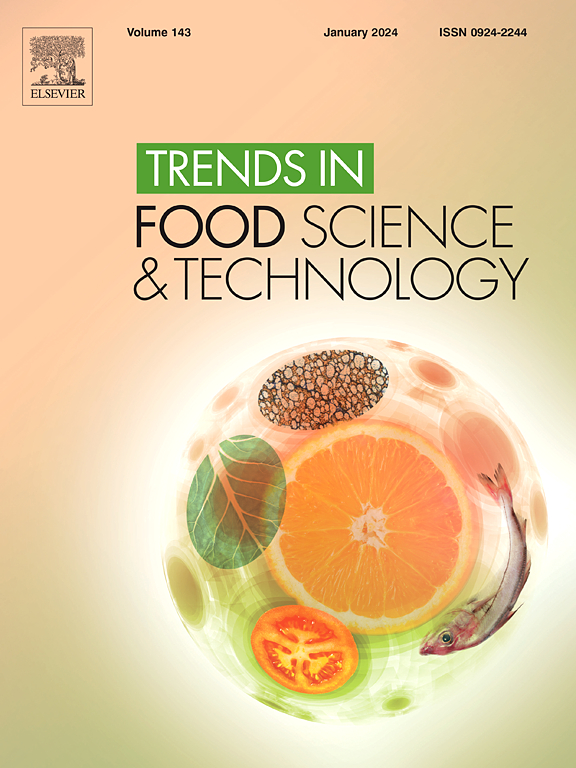A state-of-the-Art review on edible electronics: Next-generation technologies for biocompatible and ingestible devices
IF 15.1
1区 农林科学
Q1 FOOD SCIENCE & TECHNOLOGY
引用次数: 0
Abstract
Background
Conventional electronics often rely on non-biodegradable materials, hazardous chemicals, and complex disposal processes, leading to significant environmental and health concerns. With an increasing focus on sustainability and safety, the field of edible electronics has emerged, aiming to create ingestible and bioresorbable electronic devices that align with green technology principles and help mitigate electronic waste. This review highlights significant advancements in edible electronics research conducted from 2011 to 2025.
Scope & approach
This review explores cutting-edge advancements in edible electronics, focusing on developing ingestible electronic devices using safe and biocompatible materials. It examines key components such as edible conductors (ionic and electronic), dielectrics, and semiconductors, and discusses their integration into functional systems like transistors, circuits, and light-emitting devices. The review also evaluates fabrication methods, including printing, patterning, and carbonization, alongside energy solutions, and innovative energy harvesting techniques. Additionally, the review addresses the regulatory landscape, highlighting the importance of safety and compliance in developing edible electronics.
Key findings & conclusion
The review emphasizes the transformative potential of edible electronics in healthcare, diagnostics, and beyond. It highlights the significant advancements in materials and technologies that allow for safe and functional edible devices. However, challenges remain, particularly in terms of regulatory approval, large-scale fabrication, and ensuring consistent performance within the human body. Continued research and collaboration between scientists, industry leaders, and regulatory bodies are essential to advance edible electronics from concept to widespread application, promising a future where electronic devices can be safely ingested for medical, diagnostic, and even nutritional purposes.

求助全文
约1分钟内获得全文
求助全文
来源期刊

Trends in Food Science & Technology
工程技术-食品科技
CiteScore
32.50
自引率
2.60%
发文量
322
审稿时长
37 days
期刊介绍:
Trends in Food Science & Technology is a prestigious international journal that specializes in peer-reviewed articles covering the latest advancements in technology, food science, and human nutrition. It serves as a bridge between specialized primary journals and general trade magazines, providing readable and scientifically rigorous reviews and commentaries on current research developments and their potential applications in the food industry.
Unlike traditional journals, Trends in Food Science & Technology does not publish original research papers. Instead, it focuses on critical and comprehensive reviews to offer valuable insights for professionals in the field. By bringing together cutting-edge research and industry applications, this journal plays a vital role in disseminating knowledge and facilitating advancements in the food science and technology sector.
 求助内容:
求助内容: 应助结果提醒方式:
应助结果提醒方式:


